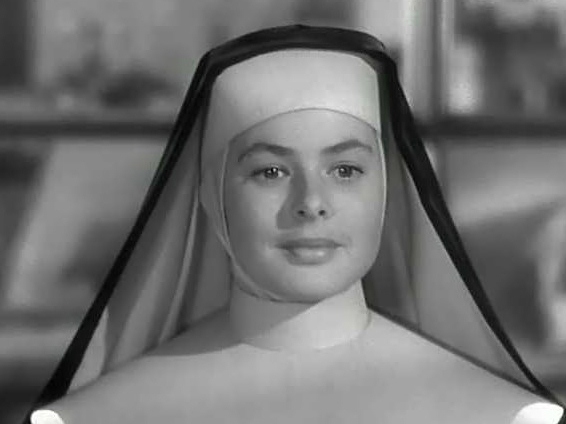Movies, specifically Hollywood movies, are the greatest machinery of propaganda the world has ever known.
So powerful is Hollywood and its ability to convey a message that in modern times America has never achieved victory in war without Hollywood’s support. When the Hollywood community turns against an American conflict, defeat is assured. Witness Vietnam, the first casualty of Hollywood’s ideological wrath. The Jane Fonda, Jon Voight vehicle “Coming Home” (1978) was a turning point in Hollywood’s hard left turn, a film that convinced large segments of the American public that Vietnam was a war whose moral foundation, the fight against Communist dictatorship, was rendered invisible and replaced by a narrative of veterans coming home broken in body and spirit, victims of an inchoate American imperialism.
Hollywood’s propaganda machine reaches past the content of movies into the very lives of movie stars. Certain roles register powerfully with the public in a manner impossible to predict. These performances end up defining an actor in a manner that resonates so profoundly with the audience that any deviation from that persona can thoroughly shatter an image–and career–beyond repair.
Perhaps the most fascinating example is the career of Ingrid Bergman (1915-1982).
A Swedish actress of unnatural natural beauty–she was ravishing, glamorous without make-up–and transcendent talent, Bergman starred in a series of films that secured her position as one of the most popular actresses in the history of American movies. Many of her films are modern classics with performances marked by a down-to-earth nobility that is rare among Hollywood stars. Besides the WW II morale booster Casablanca, (1942) her films include: “Intermezzo” (1939), “Dr. Jekyll and Mr. Hyde” (1941), “For Whom the Bell Tolls” (1943), “Gaslight” (1944), “The Bells of St. Mary’s” (1945), “Spellbound” (1945), “Notorious” (1946), “Joan of Arc” (1948) and “Under Capricorn” (1949).
In 1949, chafing under the rigid Hollywood system, Bergman wrote a fan letter to Roberto Rossellini, the Italian director who made something of a splash with his gritty, if tedious, neo-realist movies that mixed professional with non-professional actors, concentrating on little stories of the poor and oppressed, often shooting with only a bare outline of a screenplay.
Like most European artists who claim to despise Hollywood Rossellini immediately offered Bergman, one of the most bankable Hollywood stars, the lead role in “Stromboli” (1949). It’s the bleak story of a young woman whose only route out of a post World War II DP camp is through marriage to a poor uneducated fisherman who lives on the desolate island of Stromboli, a soul-crushing volcanic rock that makes the DP camp look like Disneyland.
During production, Bergman and Rossellini fell in love. The problem was that Bergman had, in 1937, at the age of 21 married dentist Petter Lindström. Newscaster Pia Lindström is their daughter. Bergman and her director had a passionate affair. Bergman became pregnant with their son Renato out of wedlock in 1950. Later, after Bergman and Rossellini were married, she gave birth to twin girls Isabella and Isotta.
Word of the extra marital affair caused a scandal in the United States. Of course, American audiences knew that many of their beloved stars misbehaved. But the studios covered up a cottage industry of star abortions, mad affairs, mental illness, raging alcoholism and drug addiction. In contrast, the Bergman-Rossellini affair was brazen, out in the open. Hollywood was unable to soften or deflect the scandal.
But Ingrid Bergman’s worst sin was that the American public identified Bergman as the saintly Sister Mary Benedict in “The Bells of St. Mary’s,” and the authentic saint “Joan of Arc,” two morally unblemished virgins.
Here was the Hollywood star machine in all its relentless glory. And here was an actress openly violating her own image, a shattering of the covenant between star and her faithful, adoring public. The dissonance between the sublime shadow on the silver screen and a cold reality of flesh and blood was too vast, too painful to absorb.
America felt betrayed. How could an American family ever again watch these lovely chaste movies with any degree of trust or belief?
Denounced on the floor of the American Senate, Bergman’s appearance on “The Ed Sullivan Show” was also cancelled. Unable to secure work in Hollywood, Bergman remained in Europe.
The American public is forgiving, and Bergman eventually returned to Hollywood where she triumphed in several fine roles.
When Sidney Lumet was directing my script for “A Stranger Among Us,” (1992) we talked about Bergman whom he directed in “Murder in the Orient Express” (1974). Sidney explained that he shot her one big scene in a long five-minute take because she was such a riveting actress that he didn’t want to cut into her performance.
Hollywood, as a vehicle for propaganda, is as vital and powerful as ever. Public morals have changed drastically since the infamous Bergman-Rossellini scandal. Now, Hollywood stars openly live together and have children without benefit of marriage. We are no longer shocked. Outrage is considered quaint if not a sign of Jacobean-like intolerance.
But consider how we have come to this point of normalizing the immoral: it is, for the most part, a product of Hollywood movies, of stars whose image and influence is so powerful that their private lives made public have shaped and continue to shape how we live.

COMMENTS
Please let us know if you're having issues with commenting.